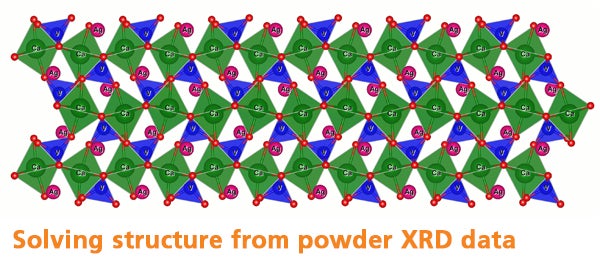
Understanding the make-up of crystalline structures is a vital aspect of the characterisation of new compounds, and can be regarded as an important first step towards the possibility of tailoring its properties.
Traditionally, crystal structures are solved using single-crystal X-ray diffraction. Thanks to a number of matured algorithms and powerful software packages, nowadays, structure solution from single-crystal X-ray diffraction data has become a push-button operation in many cases.
However, most of the crystalline materials are not available as single crystals, and hence the only route to extract the information about their structural properties is by using powder X-ray diffraction.
The first structure solved from powder diffraction data was LiSbWO6 (Le Bail et al., 1988). Since then, structure solution from powder data has developed into an established technique suitable for any crystalline material.
The first step to a successful structure solution from powder data is the availability of high-quality X-ray diffraction data. Most of the modern floor-standing diffractometers can deliver data of sufficient quality. Not every benchtop diffractometer, however, can stand the challenge.
Recently Gwilherm Nénert, XRD application specialist at Malvern PANalytical, solved the crystal structure of AgCaVO4 from powder X-ray data obtained on the Aeris Research benchtop diffractometer (Synthesis and crystal structure of the new vanadate AgCaVO4: Comparison with the arcanite structure, G. Nénert, 2017).
Please contact Malvern via the enquiries form for more information.
Le Bail et al. 1988: Ab-initio structure determination of LiSbWO6 by X-ray powder diffraction, A. Le Bail.H. Duroy. J.L. Fourquet. Materials Research Bulletin, 23(3), 1988, Pages 447-452
G. Nénert, 2017: Synthesis and crystal structure of the new vanadate AgCaVO4: Comparison with the arcanite structure, G. Nénert, Zeitschrift für Kristallographie, Crystalline Materials, 2017, DOI: 10.1515/zkri-2017-2041

